PROFILE: Mrs Kitty Proctor
Born: 1931 in Birmingham
Role during the war: A child in Stetchford who later married a WWII veteran
"Through all this life went on as normal.We had no choice. we got up and went to school or work,and just prayed that we would e safe for another day"
"Things seemed normal when the war started but London was having a terrible time with air raids and bombings before the Germans started on Birmingham and Coventry as weapons were being made there"
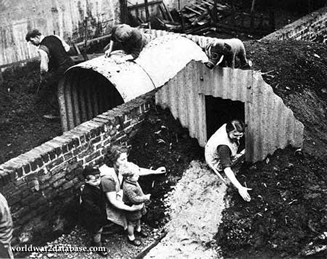
Rations
"We had to go on rations as food was not getting distributed very easily. We were issued with ration books that contained coupons to spend on food. We cut down considerably - allowed just VA Ib of fat and a ^ Ib of meat per week- that's the same amount of meat in a burger. Jam, sugar and sweets were also very scarce. Only people who kept chickens had eggs, otherwise you got powdered eggs, which tasted nothing, like the real thing. We were told to try to grow our own vegetables and babies born during the war never saw a banana or orange, as they were not imported."
Bombs
"We were issued with an 'Andersen Shelter' - a corrugated iron contraption that had to be erected in a trench in the garden and looked like an igloo. We covered it with soil and grass as protection from bombs and falling debris. We spent many hours in the shelter, usually at night, not that we slept for very long. One raid lasted 13 hours and it was very bad It was so frightening. Another raid shattered all the windows in our house and we were not allowed to go inside because there may have been structural damage. We walked to our grandmother's house. It was 2am and although it was a 30 minute walk, it seemed like a marathon."
Doodlebugs
"During the day, the enemy would send over flying bombs. We called them 'doodlebugs.' They had a motor and when it stopped they would just drop. The trouble was we could hear them but couldn't see them. We knew that when they went quiet, we had to find shelter fast I always used to run home from school, as I thought home was the best place to be. Through ail this life went on as normal. We had no choice. We got up and went to school or work, and just prayed that we would be safe for another day."
My "lucky" husband
"Long after the war, I married Fred, who had served in the Navy between 1940-5 as a leading stoker in the engine room. His job was to keep the boilers operating on a coal-powered steam ship. He was among the lucky boys who got to come home. The young men who fought to protect our country were very brave and suffered more than we shall ever know. So many of the ones that returned, often horribly wounded, were very reluctant to recount their experiences of wartime. My husband was on duty in many places - Malta, Alexandria, virtually anywhere there was a need."
Anderson Shelters
By September 1940 they were occupied almost every night by families who'd stocked them with food, reading materials, and perhaps a torch or lantern, which couldn't be used during blackouts. They used instructions that were non- perishable food. Over half a million Anderson Shelters were distributed in Britain by November 1941
  
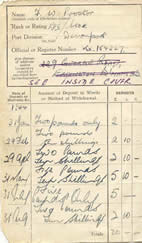
  
Click to go BACK TO TOP of page STETCHFORD VETERANS HISTORIES
|
Mr ALBERT DUFFIN
Seen right in photo is a deacon of Stetchford Baptist Church,
being interviewed by News Columnist VERNON GRAHAM. For the first 10 months of interviewing , Mr Vernon Graham, Newspaper Columnist, was the contracted worker for the project, from April 1st 2007 to January 2008. Shades of Black has recognised his hard work.
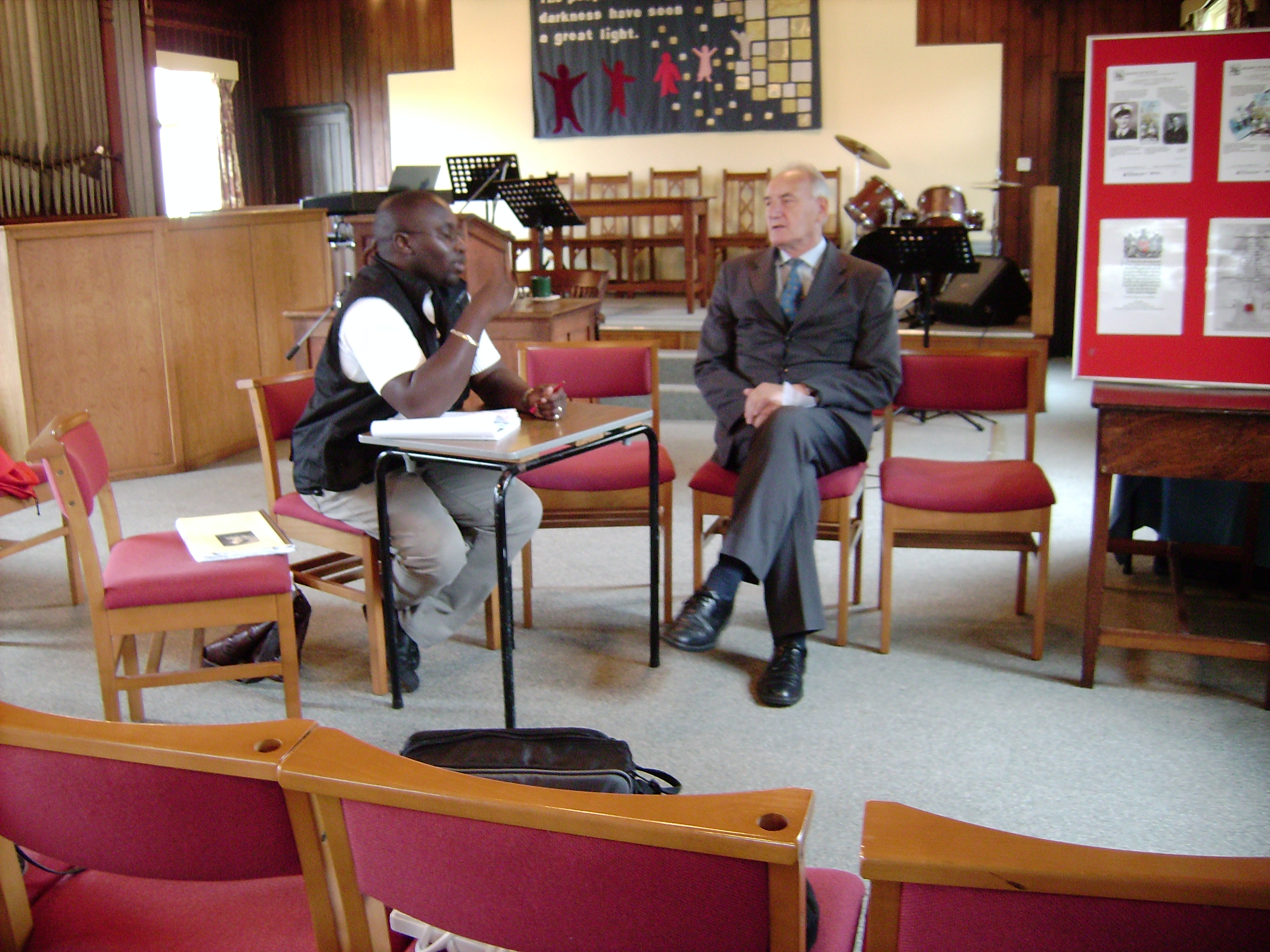
Click to go BACK TO TOP of page STETCHFORD VETERANS HISTORIES
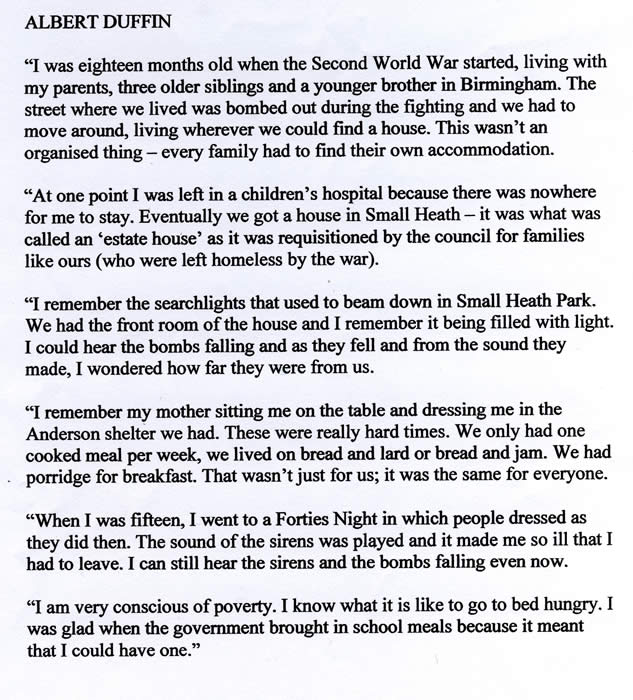
|
Mrs BRITTLE
of Kent Moat History Group talking to Veron Graham about a previous war Memorial project 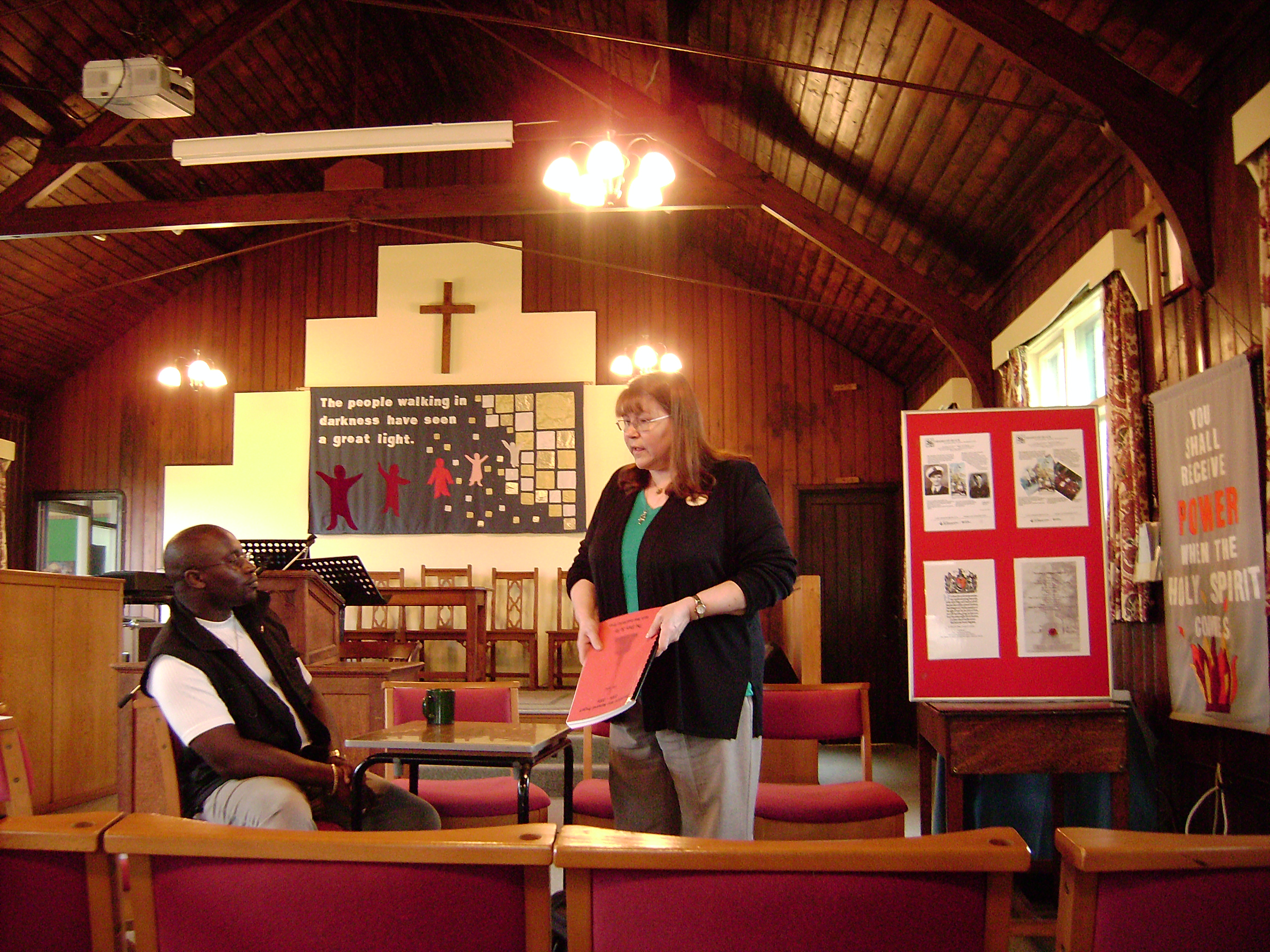
Mrs Brittle worked at Kent Moat Library where Mrs McGhie-Belgrave MBE, from the Shades of Black organisation approached for help and assistance towards the Veterans Wars research project. They had taken the Research Project idea to research the names on Stetchford memorial in 2004. Here is another group that has benefited from the SOBS Veterans Project ideas.
|
Click to go BACK TO TOP of page STETCHFORD VETERANS HISTORIES |










